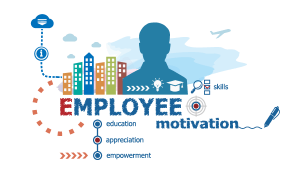
It only takes a second to blurt out a blunder, but it can take hours, weeks, and even years for your team to forget…if they ever do.
As a leader, your words reverberate throughout the company and impact your team’s results. Your words will either inspire or demotivate others. It’s important to choose words that reflect the results you, your team, and your business strive to achieve.
Words Matter to Achieve Team Results
These 7 blunders are guaranteed to create team conflict, frustration, and poor team results. Choose your words wisely.
Yeah, but…! This only invokes debate, defensiveness, and poor solutions! Listen with an open mind and heart. You will learn something new!
“That’s stupid.” This blunder is a great way to shut down team members from sharing their ideas and solutions! While you may not want to hear their ideas, you will miss out on valuable insights and solutions. Allow your team to share in their own way by saying, “that’s interesting…how would that work?”
“I have the wrong team.” Although this is a commonly believed blunder, it’s doubtful you have the wrong team! In reality, there may be one or two underperforming team members, not committed to the goal, or being difficult. Provide training and development to get everyone on the same page. During the process, you will uncover the real issues. Be prepared to have tough conversations without blaming others.
“I hate this project or customer.” Expressing this will create a blunder that will hurt your team’s ability to produce intended results. When you “hate” something, you will not provide the best direction, make the best decisions, or be willing to go beyond the norm to achieve the results. When sharing the word hate about anything with your team, the results you want will disappear. Work with your external coach and internal mentor to help manage your mindset.
“I never liked working here.” Did you know according to Gallup that over 70% of employees are in jobs that don’t fit them…including leaders? Consider these feelings are a reflection of your work responsibilities and not that you work for the wrong company or boss! Use a qualified job fit assessment to clarify the reason for your dissatisfaction. Now, focus on building the right skills and engaging your team to produce dynamic results.
“My team or customer or boss is a moron…jerk…narrow-minded (the list is endless)” Insulting someone’s intelligence or labeling them hurts team productivity and results. And, unfortunately, your team (and others) will mimic you! Instead, develop the skills to listen, learn, and be open to new ideas that may seem ridiculous. When you do this you may see they have a valid point of view. Remember, there will be times you need to work with and through others that you don’t agree with. These are skills you will always use.
[absolute silence]. When tragedy, terminal illness, or a life difficulty happens to a team member, saying something is better than saying nothing. Pick up the phone (don’t text or send emails). Let the person know, “I’m sorry” or “My thoughts are with you” and “Let me know if you need anything.” You only have this one chance to let the person know they are valued. Your effort, or lack of, will impact your team members and their results for a long time. In these situations, silence is not golden.
©Jeannette Seibly, 2020-2021 All Rights Reserved
 Jeannette Seibly is The Leadership Results Coach. She has been an award-winning executive coach, management consultant, and keynote speaker for over 28 years. She is an expert in guiding leaders and their teams to get unstuck and achieve dynamic results. Contact Jeannette for a confidential conversation.
Jeannette Seibly is The Leadership Results Coach. She has been an award-winning executive coach, management consultant, and keynote speaker for over 28 years. She is an expert in guiding leaders and their teams to get unstuck and achieve dynamic results. Contact Jeannette for a confidential conversation.
Hey bosses and managers! Did you know that your blunders encourage team conflict? It’s because your team feels unable to express their ideas or concerns without fear of being next on your “blunder list.” So instead, they take their frustrations out on each other. Get ahead of the curve by managing team conflict immediately by reading how-to-do-it!
A Note from Jeannette: How to Stop Blunders from Hurting Your Team’s Results. When I started to write this article, I realized that virtually every business owner, manager, and executive has committed these blunders, even if it was only one time. It only takes a second to blurt out a blunder, but it can take hours, weeks, and even years for your team to forget…if they ever do. If you’ve made a blunder, immediately apologize. If the issue is still hanging around, call me for a confidential conversation asap…let’s get it fixed now before it’s too late!















